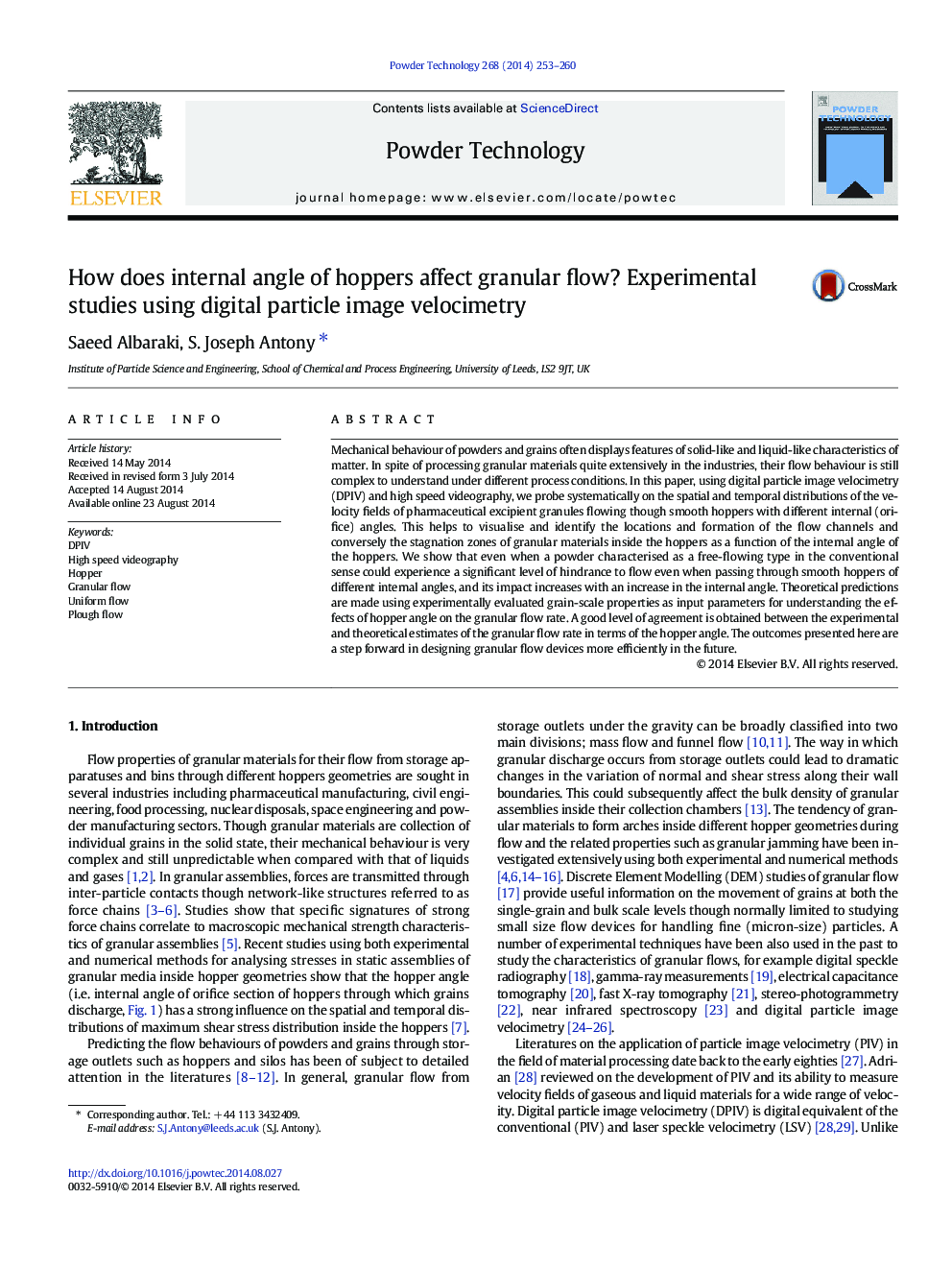| Article ID | Journal | Published Year | Pages | File Type |
|---|---|---|---|---|
| 235955 | Powder Technology | 2014 | 8 Pages |
•Low angular hoppers results mass flow of grains and funnel flow for high angular hoppers.•Granular velocity profiles help to identify the nucleation zones.•'Free-flowing' grains could experience hindrance to flow depending on the hopper angle.•Theoretical results of granular discharge using measured grain-scale input parameters compare well with that of the experiments.
Mechanical behaviour of powders and grains often displays features of solid-like and liquid-like characteristics of matter. In spite of processing granular materials quite extensively in the industries, their flow behaviour is still complex to understand under different process conditions. In this paper, using digital particle image velocimetry (DPIV) and high speed videography, we probe systematically on the spatial and temporal distributions of the velocity fields of pharmaceutical excipient granules flowing though smooth hoppers with different internal (orifice) angles. This helps to visualise and identify the locations and formation of the flow channels and conversely the stagnation zones of granular materials inside the hoppers as a function of the internal angle of the hoppers. We show that even when a powder characterised as a free-flowing type in the conventional sense could experience a significant level of hindrance to flow even when passing through smooth hoppers of different internal angles, and its impact increases with an increase in the internal angle. Theoretical predictions are made using experimentally evaluated grain-scale properties as input parameters for understanding the effects of hopper angle on the granular flow rate. A good level of agreement is obtained between the experimental and theoretical estimates of the granular flow rate in terms of the hopper angle. The outcomes presented here are a step forward in designing granular flow devices more efficiently in the future.
Graphical abstract(a) Y-shaped velocity contour and (b) visual image of a granular flowFigure optionsDownload full-size imageDownload as PowerPoint slide
